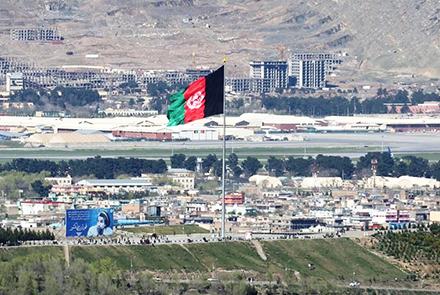The Ministry of Labor, Social Affairs, Martyrs and Disabled (MoLSAMD) in cooperation with UNICEF on Sunday launched the first-ever comprehensive study on child marriage in Afghanistan.
According to the minister of labor, social affairs, martyrs and disabled, Faizullah Zaki, the study was unique in that it not only built on previous studies but it also looked at child marriage in Afghanistan from various angles.
In his foreword, Zaki said “the practice of child marriage is widely opposed, but our understanding is ‘narrow’, and our actions inadequate.
“Building on the findings of this study, we need to embark on a national action plan to combat comprehensively the child marriage practice.”
He stated that the Child Act, which guarantees some of the strongest protections for the nation’s children, which will hopefully be passed by parliament soon, will serve as an important basis for the collective struggle against all forms of violence and abuse against children, particularly their early marriage.
He said: “The Child Secretariat under the Social Affairs division of the Ministry will serve as the primary custodian of further work on the child marriage issue. The Policy and Planning division will provide broader policy support.
“We are going to change this culture of child marriage so that no child in the country becomes the victim of this phenomenon. I reiterate our commitment to the protection and well-being of our children. It is our children on whom our future rests,” Zaki said.
“Child marriage is an appalling violation of human rights and it robs children of their education, health and childhood,” says Zaki. “Since all parents want the very best for their daughters and sons, we must work together to put an end to child marriage.”
The study findings, finalized under the leadership of MoLSAMD, shows that the security situation, poverty, deeply embedded beliefs and social norms put girls at a disadvantage.
In general, there is a narrow understanding of the negative impact of child marriage on girls. Attention is often focused on the health-related impact of child marriage, with a limited understanding of the impact of child marriage on education, nutrition, and girls’/women’s participation in economic development, the report stated.
According to the report, whilst there has been a reduction in child marriage in Afghanistan, it remains high. “In fact, child marriage has dropped by 10 per cent over a span of five years.”
“Child marriage is slightly declining in Afghanistan, and we commend the relentless efforts of the government to reduce this practice and their strong commitment to child rights,” says Adele Khodr, Representative, UNICEF Afghanistan.
“Yet, further consolidated action is needed by the different actors in society to put an end to this practice and reach the goal of ending child marriage by 2030,” she said.
The study showed that in 42 percent of households at least one member of their family got married before the age of 18. Yet, significant regional disparities exist, varying from 21 percent of households in Ghor to 66 percent in Paktia having at least one member who got married before the age of 18.
The report stated that child marriage in Afghanistan persists at rates that suggest at least one in three young girls will be married before they turn 18. However, it is not a well-researched phenomenon in this context, and gaps in knowledge regarding prevalence, practice and drivers remain.
But, What are the reasons behind the trend?
“We can not say that certain reasons lead to the marriage of a girl, but one of the key reasons is the lack of security in the country, the second issue is poverty, the issue of traditions,” said Sayed Abdul Sami Hashemi, child affairs specialist at UNICEF office.
“Child marriage is one of the old problems in our culture and tradition, but I think that the trend has now declined a little bit,” said Lal Gul Lal from Afghanistan Human Rights Organization (AHRO).
CLICK HERE for full report


